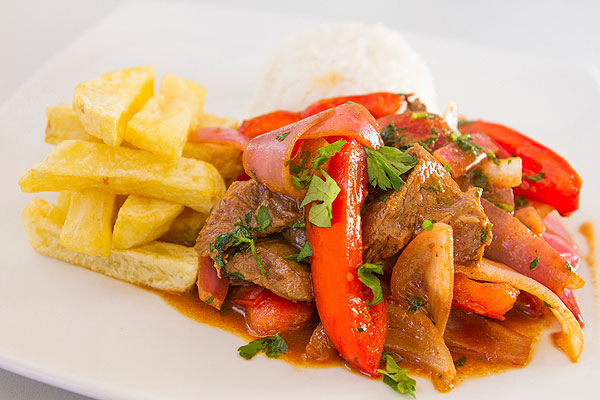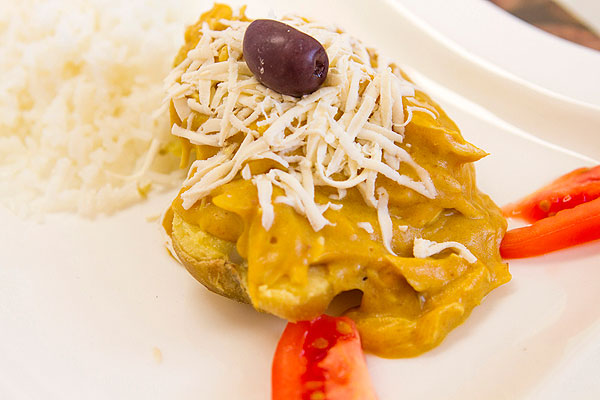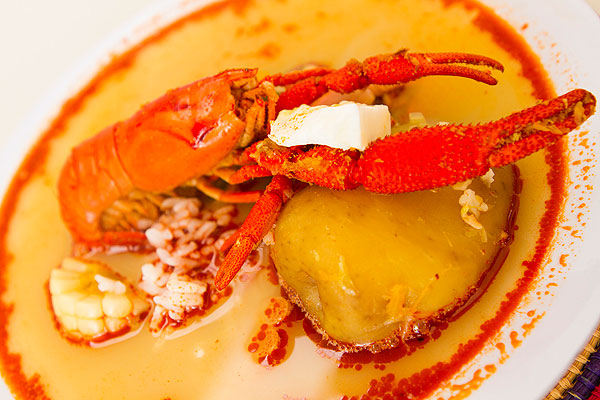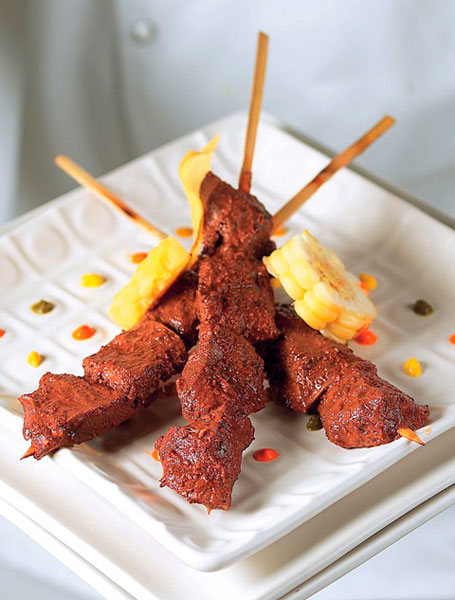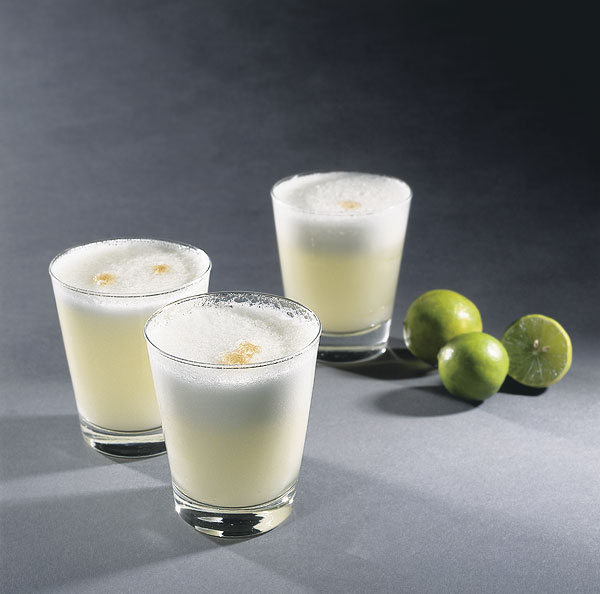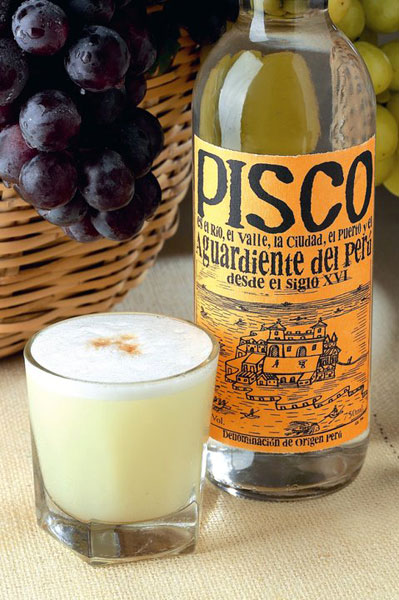Peruvian Gastronomy

Modern and cosmopolitan, our cities delight locals and tourists alike with a variety of entertainment, art, design, music, and one of the richest and most prestigious cuisines in the world. They are your primary resource for Peru’s current events, and will greet with you a smile, lots of fun, and plenty of flavor.
Lima, the capital city is a modern and fine example of the cosmopolitan side of Peru, with its world-class gastronomy (recognized by The Economist as one of the 12 most exquisite cuisines on the planet) its vibrant nightlife and variety cultural activities and entertainment options.
"Mistura" the biggest gastronomic fair in Latin America brings together all the actors from Peru's culinary world displaying their best products and recipes, as well as the leading champions of national and international cuisine.
Peru it is a pleasure
With a mixture of cultures, our identity is enriched by a great diversity of flavors. Peruvian cuisine is the result of experience, fusion and our genuine hospitality, of the satisfaction of witnessing how visitors enjoy good cooking. The marine riches of our seashore, the harmony of the Andes and the mystery of the jungle become textures, colors and delicious aromas that turn Peru into a feast of flavors.
Proposed and are under evaluation by UNESCO as Intangible Cultural World Heritage (2011).
Here, people of all races do not hesitate to call themselves “Peruvians” and make their accents and flavors part of what is ours. The land has taught us generosity by placing endless delicacies in our hands for centuries now. Children learn the colors by seeing all types of chili peppers and fruits, and our mothers at home make the kitchen a laboratory of flavors and love. For of all this, I dare not venture to give one reason why our country is so rich or where this inexhaustible source of flavors starts.
I simply introduce myself. Peru, mucho gusto.
Good cooking and an understanding of a finely spread table is maybe the most widespread habit among Peruvians. We eat all things and for every occasion: when babies are born, when the old die, when children turn into adults, when we want to tell the truth or a little, white lie in order to seduce, convince or love. A well spread table witnesses every occasion without exception.
Whenever hearing from a Peruvian that ours is the best cuisine, always remember that this not one hundred percent naïve bravado;this is due to the belief that, if there is such a thing as a sixth sense, then we, the Peruvians, have received ours to double the sense of taste.
Our identity is shaped in the kitchen. As dinner guests, we are not easily satisfied and a lot of us are magical cooks. Our tables are a shining example of pluralistic democracy; there will always be room for a cebiche of fresh flounder, a Pisco Sour, or rice with duck Chiclayo style.
Our capacity of integrating ourselves is expressed by eating Chifa, the proper name of Chinese cuisine in Peru. Endless and colorful banquets that demand silence and discipline after each and every bite allow us to appreciate what diversity really means.
How about geography? Eating in Peru, ladies and gentlemen, is a journey in itself. Starting from the bountiful Peruvian Sea, where our cebiches come swimming out, and passing through the Andes with the hundreds of varieties of potato, and moving on to the Amazon, loaded with the exotic for a natural and mysterious cuisine, we have just one great route that makes Peru a unique territory; it is the road that outlines our flavors.
It happens, then, that Peru was gifted with lands and seas of divine abundance and we, the Peruvians, for centuries now, have given thanks for this gift by cooking, eating, and creating just as the gods do.
Mucho gusto, ladies and gentlemen. This is Peru, and it is the flavors themselves that are inviting you to get to know it.
The wealth of its lands and cultural diversity endow Peru with an exquisite and tremendously varied gastronomy. Each city boasts its own regional dish with unique flavours. Thousands of countryside products and tens of living cultures, which have shared a single territory for centuries, create an offer that is practically infinite. All that is left is for your taste buds to choose.
Lima's Cuisine
Lima has a wide variety of typical dishes, available in establishments as diverse as 5 star hotels, traditional restaurants, cebiche bars, specialist chicken restaurants, markets, “huariques” (family-run establishments) and “chifas” (Chinese Restaurants). Each year takes place in Lima the "Mistura" gastronomic festival. See more ...
Arequipa's Cuisine
The "picanterías" or traditional restaurants of the "Ciudad Blanca" (White City) are a regional ancestral tradition, linking the rural with the gastronomic. These are traditional restaurants which still cook over a wood fire, a source of natural heat that intensifies the aroma of the food's spices. See more ...
North Coast Cuisine
The northern regions have a warm climate and its sea holds a generous reserve of fish and seafood. Highlights of its cuisine include "cebiches" and "sudados", which combine catches from the sea with tangy, spicy and aromatic herbs, creating fresh and intense flavours. See more ...
Cuisine from the Amazon
Western Peru's gastronomy is truly exotic. The bio-diversity of its resources appear to be almost infinite. "Chonta" or palm hearts, which are obtained from palm trees and used to make salads, are a basic element in Amazonian cuisine. Many different meats are eaten in the region including: beef, poultry, fish, sheep and other mountain animals, including the "paca", renowned in the area for its tasty flavour and lean meat. Cuisine of Iquitos.
Andean Cuisine
The Peruvian mountains are rich in products containing high nutritional value. Ancient Peruvians knew how best to combine these, creating wonderful flavours while still conserving their natural properties. Wood-fired ovens and clay cooking pots are part of the Inca wisdom in terms of preserving the food's nutrients, done through slow cooking and producing deep aromas.
New Andean Cuisine
Metropolitan Lima and in the main cities of the interior, such as Cusco, Arequipa, Iquitos, Huaraz, Puno, Huancayo, Cajamarca etc. In recent decades, Peruvian chefs have returned to the ingredients used by their ancestors, prior to Spanish influences, and successfully incorporated them into international gastronomy. A new culinary style emerged, which revisited pre-Hispanic Peruvian cooking ideas and combined them with international food trends. The result is a gentle harmony of flavors, minimum seasoning and light, low fat cooking. Also called Novoandina.
Peruvian Drinks
Peru produces an enviable quantity and variety of fruits, and with the help of innovative experts many exotic combinations have been produced that its hard to know where to start.
Besides restaurants and cafés, small juice shops can be found in cities and markets, as well as specialized chains in the capital's districts and provinces. Corn represents a historic and basic raw material and is included in the preparation of drinks like the traditional "chicha de jora" and the creole drink "chicha morada". "Chicha de jora" is made from corn fermented with fruits, and was used by ancient Peruvians in special ceremonies, while "chicha morada" is made from corn boiled with fruits and mixed with sugar and lemon to taste.
Pisco and Pisco Sour
Pisco is the national drink of Peru, a spirit made from grapes that emerged in these lands during the colonial era, after the Spanish introduced the first vineyards in the country.
The word ‘pisco’ forms part of the name of a large number of Peruvian towns, counties and hamlets, such as Piscohuasi or Piscopampa. From mid-way through the 16th century, the Spanish began using the name "pisco" to describe a river, a town and a port south of Lima. (Pisco Town)
The first reports of the production of this grape spirit in Peru can be traced back to the start of the 17th century. Today "pisco" is only produced on the coast (up to 2,000 m.a.s.l. - 6,562 fasl) in the departments of Lima, Ica, Arequipa, Moquegua and Tacna with the aim of protecting the designation of origin.
A long list of cocktails are based on "pisco". However, the most emblematic is the "pisco sour", an entirely Peruvian drink that combines the taste of grapes with the sharp acidity of lemon.
Pisco can be enjoyed on its own or in a long list of cocktails, including Chilcano, Algarrobina or – most emblematic of all - Pisco Sour.
Pisco & Pisco Sour

